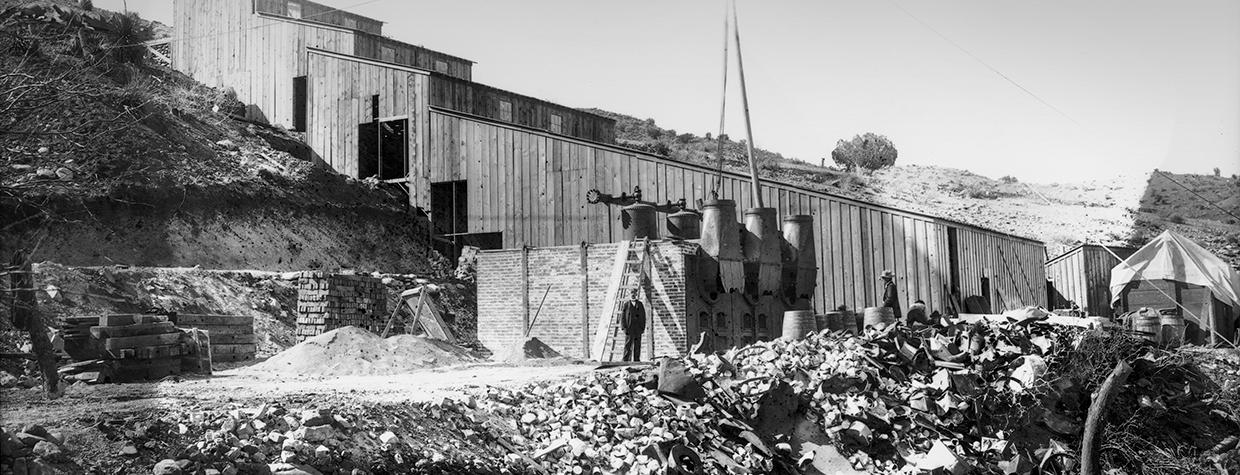Arizona history is full of swindlers, but few were as brazen as Richard C. Flower, who advertised his con right in the name of the operation. As the story goes, in the late 1890s, Flower was seeking to incorporate his mining company and was asked what he wanted to name it. He replied, “Any name that will cause them to spend their mazuma” (a Yiddish-derived slang term for money). And Spenazuma was born.
Flower was a New York “healer” who had seen a newspaper article announcing the opening of lands in Territorial Arizona to mining. He quickly abandoned his questionable medical company and became a mining promoter, and after the Spenazuma Mining Co. was formed, Flower took in hundreds of thousands from investors — all before even finding a site on which to bestow the Spenazuma name.
Eventually, Flower toured a spot in the foothills of the Santa Teresa Mountains, northwest of Mount Graham, and deemed it perfect for the Spenazuma Mine. What appeared next was a mine that looked good enough for pictures and investor tours, complete with buildings, shafts and tunnels. Photos, telegrams and ore-rich “samples” — which, in reality, Flower had purchased from other sites — kept money coming in. According to one account, the citizens of Tivoli, New York, raised $60,000 to invest in the mine.
As is often the case, the con was undone by investigative journalism. Mining reporter George H. Smalley of The Arizona Republican (now The Arizona Republic) paid a visit to Spenazuma in 1899 and found a mine that was just for show, with shallow mine shafts, shoddy buildings and piles of minerals that appeared to have come from other mines.
“I dropped into a chat with one of these miners who was waiting for shift time,” Smalley reported. “He said that he had been working at the camp several months and had not seen any ore at all in that time. ‘This is the laziest camp I ever struck,’ said he. ‘We have a good time during our shift, and very little work is done.’ ”
After investigating further, Smalley concluded, “The Spenazuma company is committing a crime against Arizona, which its people should punish.” It wasn’t long before Governor Nathan Oakes Murphy was warning against investing in the company, leading Flower to abandon the Spenazuma operation and eventually flee the Territory. He never was prosecuted for the swindle, but he engaged in other schemes, was arrested several times and served a stint in prison before dying in New Jersey in 1916. As for his investors, they were left with a painful lesson on how to spend their mazuma.

